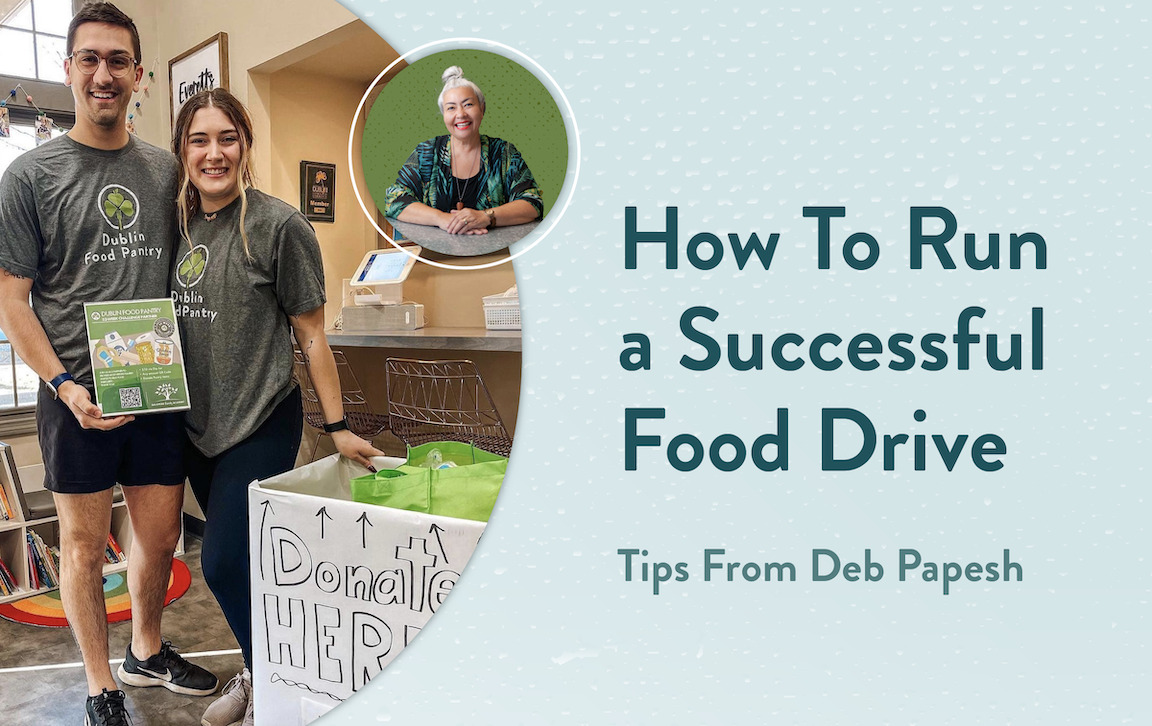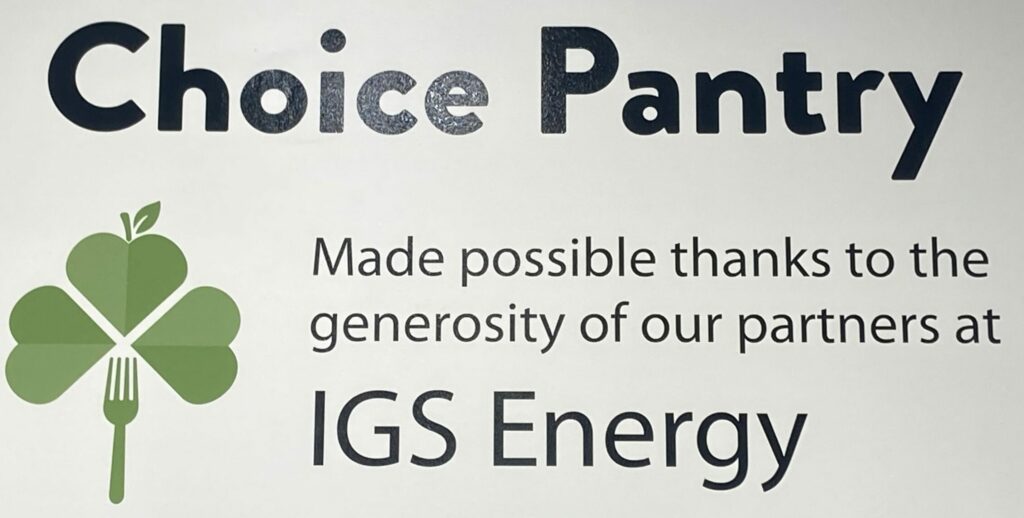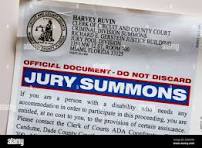
Fundraising / food drives are a part of our daily lives, especially in times of need as we are experiencing right now. The Hunger Cliff is a reality. All communities, all across our nation, are unified through food needs post-pandemic, and the need is not lessening any time soon. We see this here in our own community of Dublin, Ohio.
But community food needs can also be a great catalyst to bring a community together for a shared purpose, one that benefits everyone. An example of a common goal to defeat hunger would be our Dublin Food Pantry’s current comprehensive capital campaign #everyoneeatshere. Food drives organized by the community are a part of this bigger picture. Having been a part of many food drives and fundraising campaigns within the schools and community over the years, I’ve gathered a few ‘Best Practices’
Expect Success
•Name the Food Drive! Make it catchy, use alliteration, a play on words, and be relatable. (Ex. Cinco ‘Deb’ Mayo since my birthday Food Drive happens to be on my May 5 birthday, or brainstorming an idea with others, like the ‘Chow Down for Charity’ collaborative event with other non-profits who support our schools).
•Plan a food drive alongside an already-existing event. If there’s already event planning in place, half of the awareness work is already done! Find a way to collaborate and add in! The long-existing food drive incorporated into the Dublin Irish Festival is an excellent example.
•Create buy-in. Find a reason for an already-existing event to want your participation. How do you complement one another? What does each gain from this altruistic project of collecting food for those in need? Be creative, and don’t be afraid to highlight the shared gains of joining your cause.
•Celebrate the wins along the way and share them with all stakeholders.
Galvanize Support
• Everything worthwhile is accomplished with the team. Lead with this mindset.
• Host a brainstorming session early on with the goal of galvanizing as many community partners as possible. Begin with a large sheet of butcher paper and map out ideas from all interested team members so that everyone’s thoughts are included.
• Value all ideas, even if they cannot be used in their initial format. Find a way of coding brainstormed ideas so that some that might not be able to be used fully on this project could be shifted to a future project or altered.
•The power of social media for collection event push-out cannot be overstated. Reach out on all platforms, websites, and via emails to galvanize interest and momentum
Be Positive
• Be a positive role model by giving honest and constructive feedback to team members throughout the process.
• Get excited yourself! A positive and pumped-up food drive leader has a contagious spirit. Share that positivity early and often.
• Plan a way to keep the troops going during the planning and implementation phase of a food drive. This includes treats at planning meetings, and definitely hydration and snacks at the event. Look for community collaborators to donate their services and goods to this important piece of success.
• Affirm, and reaffirm people’s contributions with gratitude posts online during the planning phase of the project. Nothing boosts altruism more than highlighting the smiles of those who have contributed to a food drive in the past.
• Does your group of volunteers work well together and know each other well? If they do not, think of a way for them to have an icebreaker activity during a planning meeting or even 15 minutes before the event begins.
Be Organized
• Choose a leader, or Co-leads, within a company, school, or event who will create committees that can do specific work.
• Develop committees needed for the project, such as publicity, materials, cleanup, gratitude, and even a door prize committee. Make it fun by awarding small prizes contributed by collaborating businesses.
• Food drives typically last one day, or are a weeklong process. Plan accordingly by staging where food items will be collected, how they will be collected, where they will be stored, and how they will be delivered.
• If food pantry members are not at the final weighing in of the food, ask the food drive volunteers to take photos and videos, and send them to you. This way, reels and still-shot posts can be created on social media and shared with others.
•Create a calendar that helps all parties involved stay connected and up to date. Right now, our DFP has a 52-Week Challenge calendar to schedule our various participating food drives.
Focus on Goals
•Set goals for success! Whether it is a monetary goal or a pantry item, collection, or number goal, having something to work toward brings everybody together.
• Break larger goals into smaller, more manageable chunks. For example, if there is a school project to raise a certain number of pounds, divide that total number by grade level and have students work toward how to get to those contribution levels.
• Provide a fundraising link through a QR code to make it easy to donate monetarily.
Because our DFP work follows a continuous improvement model plan, we encourage others to plan, execute, reflect, and revise their own models. Most of all, we are sure to give gratitude to all participants so that they will feel encouraged to participate and lead another one in the near future!
-Deb Papesh, DFP Board/Development & Fundraising
More From The Pantry



